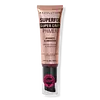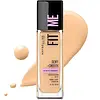What's inside
What's inside
 Key Ingredients
Key Ingredients

 Benefits
Benefits

 Concerns
Concerns

 Ingredients Side-by-side
Ingredients Side-by-side

Water
Skin ConditioningGlycerin
HumectantPropanediol
SolventPEG-150 Distearate
EmulsifyingPolysorbate 80
EmulsifyingPhenoxyethanol
PreservativeButylene Glycol
HumectantBetaine
HumectantNiacinamide
SmoothingTocopheryl Acetate
AntioxidantPEG-240/Hdi Copolymer Bis-Decyltetradeceth-20 Ether
StabilisingHydrolyzed Wheat Protein/Pvp Crosspolymer
Parfum
MaskingSodium PCA
HumectantEthylhexylglycerin
Skin ConditioningDisodium EDTA
Sodium Lactate
BufferingPCA
HumectantCitrullus Lanatus Fruit Extract
Skin ConditioningPentylene Glycol
Skin ConditioningSodium Benzoate
MaskingCereus Grandiflorus Flower Extract
Skin ConditioningSerine
MaskingAlanine
MaskingGlycine
BufferingPotassium Sorbate
PreservativeSodium Acetylated Hyaluronate
HumectantSodium Hyaluronate
HumectantGlutamic Acid
HumectantLysine Hcl
Skin ConditioningThreonine
Arginine
MaskingAloe Barbadensis Leaf Powder
Skin ConditioningSodium Hyaluronate Crosspolymer
HumectantEDTA
Hydrolyzed Sodium Hyaluronate
Skin ConditioningSorbic Acid
PreservativeProline
Skin ConditioningPotassium Laurate
EmulsifyingTocopherol
AntioxidantCI 17200
Cosmetic ColorantWater, Glycerin, Propanediol, PEG-150 Distearate, Polysorbate 80, Phenoxyethanol, Butylene Glycol, Betaine, Niacinamide, Tocopheryl Acetate, PEG-240/Hdi Copolymer Bis-Decyltetradeceth-20 Ether, Hydrolyzed Wheat Protein/Pvp Crosspolymer, Parfum, Sodium PCA, Ethylhexylglycerin, Disodium EDTA, Sodium Lactate, PCA, Citrullus Lanatus Fruit Extract, Pentylene Glycol, Sodium Benzoate, Cereus Grandiflorus Flower Extract, Serine, Alanine, Glycine, Potassium Sorbate, Sodium Acetylated Hyaluronate, Sodium Hyaluronate, Glutamic Acid, Lysine Hcl, Threonine, Arginine, Aloe Barbadensis Leaf Powder, Sodium Hyaluronate Crosspolymer, EDTA, Hydrolyzed Sodium Hyaluronate, Sorbic Acid, Proline, Potassium Laurate, Tocopherol, CI 17200
Ethylhexyl Methoxycinnamate 7%
UV AbsorberWater
Skin ConditioningCyclopentasiloxane
EmollientDimethicone
EmollientGlycerin
HumectantIsotridecyl Isononanoate
EmollientPEG-9 Polydimethylsiloxyethyl Dimethicone
EmulsifyingDisteardimonium Hectorite
StabilisingDimethicone/Polyglycerin-3 Crosspolymer
CleansingSodium Chloride
MaskingPEG-10 Dimethicone
Skin ConditioningPhenoxyethanol
PreservativeMethylparaben
PreservativeDisodium Stearoyl Glutamate
CleansingChlorphenesin
AntimicrobialDisodium EDTA
EDTA
Acrylates Copolymer
Propylparaben
PreservativeParfum
MaskingTocopherol
AntioxidantAscorbyl Palmitate
AntioxidantAluminum Hydroxide
EmollientButylparaben
MaskingPEG-9
HumectantEthylparaben
PreservativeDipropylene Glycol
HumectantAlpha-Isomethyl Ionone
PerfumingTitanium Dioxide
Cosmetic ColorantIron Oxides
Ethylhexyl Methoxycinnamate 7%, Water, Cyclopentasiloxane, Dimethicone, Glycerin, Isotridecyl Isononanoate, PEG-9 Polydimethylsiloxyethyl Dimethicone, Disteardimonium Hectorite, Dimethicone/Polyglycerin-3 Crosspolymer, Sodium Chloride, PEG-10 Dimethicone, Phenoxyethanol, Methylparaben, Disodium Stearoyl Glutamate, Chlorphenesin, Disodium EDTA, EDTA, Acrylates Copolymer, Propylparaben, Parfum, Tocopherol, Ascorbyl Palmitate, Aluminum Hydroxide, Butylparaben, PEG-9, Ethylparaben, Dipropylene Glycol, Alpha-Isomethyl Ionone, Titanium Dioxide, Iron Oxides
Ingredients Explained
These ingredients are found in both products.
Ingredients higher up in an ingredient list are typically present in a larger amount.
Disodium EDTA plays a role in making products more stable by aiding other preservatives.
It is a chelating agent, meaning it neutralizes metal ions that may be found in a product.
Disodium EDTA is a salt of edetic acid and is found to be safe in cosmetic ingredients.
Learn more about Disodium EDTAEDTA is the shortened name for ethylenediamine tetraacetic acid. It is a chelating agent and used to stabilize products.
Chelating Agents are used to prevent trace metal ions from binding to other ingredients. This can prevent unwanted reactions or changed efficacy of products.
Glycerin is already naturally found in your skin. It helps moisturize and protect your skin.
A study from 2016 found glycerin to be more effective as a humectant than AHAs and hyaluronic acid.
As a humectant, it helps the skin stay hydrated by pulling moisture to your skin. The low molecular weight of glycerin allows it to pull moisture into the deeper layers of your skin.
Hydrated skin improves your skin barrier; Your skin barrier helps protect against irritants and bacteria.
Glycerin has also been found to have antimicrobial and antiviral properties. Due to these properties, glycerin is often used in wound and burn treatments.
In cosmetics, glycerin is usually derived from plants such as soybean or palm. However, it can also be sourced from animals, such as tallow or animal fat.
This ingredient is organic, colorless, odorless, and non-toxic.
Glycerin is the name for this ingredient in American English. British English uses Glycerol/Glycerine.
Learn more about GlycerinParfum is a catch-all term for an ingredient or more that is used to give a scent to products.
Also called "fragrance", this ingredient can be a blend of hundreds of chemicals or plant oils. This means every product with "fragrance" or "parfum" in the ingredients list is a different mixture.
For instance, Habanolide is a proprietary trade name for a specific aroma chemical. When used as a fragrance ingredient in cosmetics, most aroma chemicals fall under the broad labeling category of “FRAGRANCE” or “PARFUM” according to EU and US regulations.
The term 'parfum' or 'fragrance' is not regulated in many countries. In many cases, it is up to the brand to define this term.
For instance, many brands choose to label themselves as "fragrance-free" because they are not using synthetic fragrances. However, their products may still contain ingredients such as essential oils that are considered a fragrance by INCI standards.
One example is Calendula flower extract. Calendula is an essential oil that still imparts a scent or 'fragrance'.
Depending on the blend, the ingredients in the mixture can cause allergies and sensitivities on the skin. Some ingredients that are known EU allergens include linalool and citronellol.
Parfum can also be used to mask or cover an unpleasant scent.
The bottom line is: not all fragrances/parfum/ingredients are created equally. If you are worried about fragrances, we recommend taking a closer look at an ingredient. And of course, we always recommend speaking with a professional.
Learn more about ParfumPhenoxyethanol is a preservative that has germicide, antimicrobial, and aromatic properties. Studies show that phenoxyethanol can prevent microbial growth. By itself, it has a scent that is similar to that of a rose.
It's often used in formulations along with Caprylyl Glycol to preserve the shelf life of products.
Tocopherol (also known as Vitamin E) is a common antioxidant used to help protect the skin from free-radicals and strengthen the skin barrier. It's also fat soluble - this means our skin is great at absorbing it.
Vitamin E also helps keep your natural skin lipids healthy. Your lipid skin barrier naturally consists of lipids, ceramides, and fatty acids. Vitamin E offers extra protection for your skin’s lipid barrier, keeping your skin healthy and nourished.
Another benefit is a bit of UV protection. Vitamin E helps reduce the damage caused by UVB rays. (It should not replace your sunscreen). Combining it with Vitamin C can decrease sunburned cells and hyperpigmentation after UV exposure.
You might have noticed Vitamin E + C often paired together. This is because it is great at stabilizing Vitamin C. Using the two together helps increase the effectiveness of both ingredients.
There are often claims that Vitamin E can reduce/prevent scarring, but these claims haven't been confirmed by scientific research.
Learn more about TocopherolWater. It's the most common cosmetic ingredient of all. You'll usually see it at the top of ingredient lists, meaning that it makes up the largest part of the product.
So why is it so popular? Water most often acts as a solvent - this means that it helps dissolve other ingredients into the formulation.
You'll also recognize water as that liquid we all need to stay alive. If you see this, drink a glass of water. Stay hydrated!
Learn more about Water